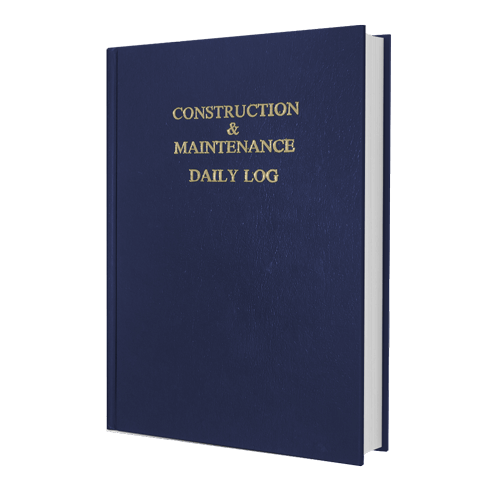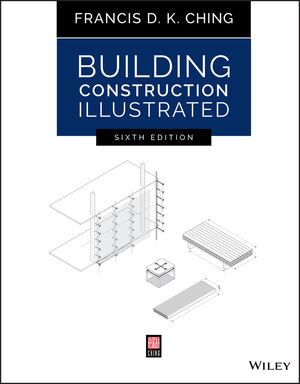"Concerned" is the word peer reviewer James O. Malley uses to describe his initial reaction, in 2014, to the performance-based seismic design for a 17-story office building in Los Angeles, several hundred feet from the Newport-Inglewood fault. Malley was especially taken aback by the PBSD of the tower portion of the building, dubbed the (W)rapper by its architect because of its exotic exoskeleton.
Instead of a traditional grid system, Eric Owen Moss Architects (EOMA) designed a steel exoskeleton with a diabolical—to engineer and erect—series of curvy and crisscrossing bands. At least to the uninitiated, the tower architecture is reminiscent of a giant gift box, festooned with randomly placed steel ribbons.
The 76-year-old Moss, who founded the 20-person EOMA in 1973, calls the (W)rapper “an experiment” in office design, based on, among other inputs, a 1919 poem by William Butler Yeats, titled “The Second Coming,” and two EOMA art installations, each with bands.
The language of the bands suggests “the prospect of a center or of multiple centers,” says the architect, who explains that he placed a parenthesis around the “W” in (W)rapper because the form also implies rap music.
The bands are derived from arcs on concentric circles. Each is designed using a different radius. The curves are based on polar coordinates, not a traditional Cartesian layout system.
Moss, who has been working on the (W)rapper for developer Samitaur Constructs for more than two decades, says there is a method behind the system of 5,000 linear ft of wavy tubular bands. Pragmatically, the exoskeleton eliminates both perimeter and interior columns. That provides flexible office space and allows varying floor-to-floor heights, he says.
About a decade ago, EOMA first presented its (W)rapper architecture as a fait accompli to the project’s structural engineer, the Los Angeles-area office of Arup. The geometry was set, especially for the expressed bands.
The only variable allowed would be the thickness of the steel of the tubes, not their outside dimension. Thickness varies from 1 in. to 2.5 in. “We tuned the strength by tuning the thickness,” says Dolan Daggett, EOMA’s project director.
The architect charged the engineer with satisfying the building code, knowing the band structural system is not recognized by the code. “You can’t build this” according to the prescriptive code provisions, Moss says. “No code tolerates this.”
About a decade ago, at his first meeting with EOMA, Atila Zekioglu, Arup’s principal for the (W)rapper, asked myriad questions. “I’m looking at this puzzle and basically wondering, ‘What are we going to do for earthquakes?’” Zekioglu says.
The engineer immediately knew for certain that Arup’s only approval option was PBSD, which is permitted with peer review under guidelines of the Los Angeles Tall Buildings Structural Design Council.
He also knew the peer review process would not be easy. But Zekioglu, a 35-year veteran of structural engineering, relishes challenging jobs. So he dove in.
The (W)rapper has a dual structural system, consisting of the bands and a steel-plate shear wall core, offset but attached to the tower on the building’s south side.
Unprecedented
Malley, a senior principal with Degenkolb Engineers, San Francisco, has done about 50 PBSD reviews over more than 20 years. He knew from the get-go that the (W)rapper review would be unprecedented. From beginning to end, with starts and stops along the way, the review took nearly five years.
When Malley and the late Stephen A. Mahin, the other structural peer reviewer, first saw the design for a steel structure on a fixed base, they were extremely concerned about the configuration of the bands and how the design team was going to be able to justify the band connections and intersections.
The California Geological Survey estimates the Newport-Inglewood fault, along with the Rose Canyon fault, is capable of triggering a magnitude 7.3 or 7.4 quake. The Newport-Inglewood fault last ruptured in 1933’s magnitude 6.4 Long Beach quake.
In 2014, at their first meeting in Los Angeles, the reviewers said they could not visualize a structural validation process for a unique and nonuniform system on a site so close to a major fault.
Mahin, who died in February 2018, and Malley weren’t even sure if the nonrepetitive, nonredundant system qualified as a moment frame, a braced frame or a hybrid. “No one had ever [physically] tested the geometries,” says Malley, a requirement for seismic moment connections that are not prequalified by the code.
“The (W)rapper is incredibly complex and hard to grasp.”
– Joseph Healy, Matt Construction
At the second peer-review meeting, Arup introduced the idea of isolators under the superstructure, instead of a fixed base. “I had the idea on day one but wanted to explore it further” before presenting it, says Zekioglu.
The concentrated point loads of the bands, which come down to foundations at only eight locations, and the relatively compact building volume made base isolation a viable strategy, he adds.
The peer reviewers agreed. “It made absolute sense for this system,” says Malley. “It took about 10 seconds for us to say, ‘Yes, this is the best way to go.’”
Arup’s base-isolated scheme allowed the project to move forward for approval under the alternate means and methods provision of the building code, but it didn’t solve the daunting superstructure construction challenges.
“The (W)rapper is incredibly complex and hard to grasp,” says Joseph V. Healy, project executive for the general contractor, Matt Construction Corp.
Matt, brought to the table in 2014 to provide preconstruction services, is known for taking on complicated jobs. But “this is a higher level of complexity” than usual, says Healy.
For construction, a major factor is that the building is not self-supporting until the superstructure is complete. That meant a shoring system and “a very special order for the building to remain stable during erection,” Healy says.
Also, there is little uniformity and repetition in the building. That meant almost no learning curve.
Construction began in November 2018. With the project about 40% complete, only time will tell how well the erection goes.
The (W)rapper tower, 195 ft x 55 ft in plan, is up three stories of 16. The offset core—65 ft x 60 ft in plan and attached to the south side of the tower—like a bookend—is up nine of its 17 stories.
Located on the Culver City border of Los Angeles, the (W)rapper contains 10 office levels with three different floor-to-floor-height options—13.5 ft, 16.5 ft and 24 ft. The three 24-ft volumes allow a mezzanine floor, hung from the full floor above it. The band system allowed EOMA to vary the floor heights.
The bands are custom-fabricated, built-up, arching structural-steel box sections made from 50-ksi steel plate of thicknesses ranging from 1 in. to 2.5 in. Box sections measure 2 ft x 5 ft for the first three floors and 1 ft x 5 ft for the balance of the structure.
Bands curve along varying radii and intersect across the facade. They are the primary gravity and lateral framing. Some bands are helical—arching in both plan and section.
EOMA first designed a structural concrete core, says Arup. The switch to a steel-plate shear-wall core, which is much lighter than concrete, reduced seismic loads by 10% to 15% and simplified construction, says Zekioglu.
Base isolation of the superstructure is achieved through 20 triple-pendulum-isolators—18 under the core and tower and two for an exterior grand stair to the east. The isolators are at the top of the columns supporting the ground floor.
Seismic isolation reduces seismic loads by a factor of three or four compared to a fixed system, says Arup. Members are smaller and less costly. The system also will significantly improve seismic performance.
The steel core and the base isolators saved about $10 million, says Healy. The owner declines to provide any other financial details about the job.
The peer reviewers embraced base isolation as the only workable system because everything above the isolators could be designed to remain essentially elastic, says Malley. In addition, Arup could confirm connection behavior without doing large-scale physical testing, which may or may not have been possible because of limitations of existing test facilities.
“I don’t know if I’ve ever had a project where I felt that based isolation was the only solution,” says Malley.
Supported by Chords
In the tower, each floor plate is supported by chords, many on the diagonal, which span between bands, providing the primary gravity load path. Two girders running almost parallel and set 10 ft in from the north and south edges span between chords and support a series of tertiary beams. The beams in turn support a composite concrete-and-metal deck.
Metallurgist Exponent worked with Arup during design to demonstrate that the built-up band cross-sections and proposed band intersections, or nodes, would behave in conformance with specified performance levels in various quake scenarios, says Amie Nulman, Arup’s associate principal. Exponent performed analytical material and weld-fracture analysis and continues to work during construction administration.
Arup used an LS-Dyna model for its nonlinear seismic analysis of the (W)rapper. The model, which simulates potential quake scenarios, contains approximately 100,000 shell elements, representing floors, walls and steel plates of the core, and 30,000 beam elements, representing columns, beams, vertical and horizontal boundary elements, bands and isolators.
“The project is really a test case. The building as a building needs to stand on its own, and I think it will.”
– Eric Owen Moss, EOMA
The analysis, run using cloud computing, confirmed the target performance of “structural immediate occupancy” under the maximum considered earthquake scenario. That performance is significantly better than the building code’s minimum objective of collapse prevention at the MCE level, says Arup.
EOMA created a parametric model using Digital Project/Catia software that allowed the various systems to be updated to reflect changes in structural design criteria. In addition, unit quantity take-offs were exported to spreadsheets to confirm steel tonnage estimates for cost analysis models.
On the east and west faces, there are structural elements—EOMA calls them band-aids—in the floor framing to transfer loads from the girders to the bands where there is no direct connection. Custom-fabricated band-aids are built-up, rolled structural-steel box sections.
With the design set and approved, Matt got its notice to proceed in early November 2018. The 30-ft-deep excavation and associated shoring for the tower, the core and the larger footprint of the garage, with any required excavation shoring, proceeded according to plan. So did the casting of the 6-ft- to 8-ft-thick mat, and construction of the two garage levels and the concrete pedestals for the base isolators.
The 18 superstructure isolators are located in the upper level of the garage. Their pedestals extend to the mat, says Kevin Pitzer, Matt’s senior project manager.
Footings and other provisions for the 26 wide-flange erection columns that support the bands during construction had to be coordinated with garage construction before structural steel work started, says Healy.
Erection columns are largely around the tower’s perimeter, except on the south side where the tower is against the core. Columns size and location varies depending on the bands they are intended to support.
Crews cast most of the footings for the erection columns into the mat. There are six spread footings outside the building footprint on the west side. The tower crane, to the west, also sits on a spread footing.
As steel erection proceeds, 20 erection columns will be anchored into the garage slab; the other six into their spread footings. Footings will remain. Only columns will be removed.
It took several months longer than usual for Matt, with steel contractor SME Steel and its team—including an erection engineer—to work out the superstructure sequence. SME declined to comment at this time on the (W)rapper.
Ground floor framing, supported by the below-grade concrete structure, started on Jan. 8. Crews put the first bands in, on the north side, on Feb. 12.
The bands, which are connected with erection bolts until welding, sit on the isolator nodes, atop isolators. Other nodes for band intersections are prefabricated within the hollow tubes.
Erection crews follow a piece-by-piece plan from SME’s erection engineer. There are more than 72 sheets that describe the sequence, which is still undergoing adjustments based on field conditions.
Broadly, the sequence is: 1) install two-story falsework; 2) erect a two-level band, bolted to falsework; 3) connect two chords to the band; 4) install intermediate floor framing; 5) if appropriate, erect a second band that intersects the first, forming an inverted V or a lopsided X; 6) repeat steps 1-5.
Other floor framing and girders follow along. Welding starts after plumbing and construction bolting.
The first sequence started on the north side. The second started in the northwest corner. Then, crews moved to the southeast corner. To maintain stability, band erection “jumps all over the place,” says Pitzer.
The core is set to top out in early July. If all goes as planned, the tower will top out next February.
Once structural steel is 100% erected and welded, the building will be deshored using a specific sequence. After deshoring, delay “pours” on each floor are placed. Once crews finish that, window wall installation starts.
Substantial completion is set for March 2022. “With some inclement weather and some other minor issues, we were a little behind schedule, but we are catching up,” says Pitzer.
So far, the coronavirus pandemic has only resulted in a two-day work stoppage, March 23-24. On March 25, crews were back on the job.
Thanks to the pandemic, the future remains more uncertain than usual. But Moss is upbeat: “The project is really a test case. The building as a building needs to stand on its own, and I think it will.”















